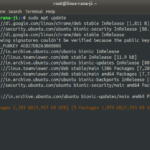Understanding Application Security

Application security is an ever-evolving and complex field of study which requires an interdisciplinary approach to understand the various threats posed by malicious software and potential vulnerabilities within an application. It is a subset of information security and aims to protect an application from unauthorized access, misuse, and modification. Application security is often approached from a risk-based perspective and involves identifying and mitigating potential threats to an application, such as malicious code, buffer overflows, SQL injections, and cross-site scripting attacks. To effectively secure an application, organizations must understand the nature of the application, its environment, and the threats posed by malicious actors. Security professionals must also have an understanding of the application’s architecture, components, and dependencies, as well as the associated risks and potential.
What Are Security Vulnerabilities?
Security vulnerabilities are weaknesses in an information system, network, or application that can be exploited by a malicious actor. These vulnerabilities can result in a compromise of the system’s security, meaning that it can be accessed, modified, or destroyed without the knowledge of the legitimate owner. Vulnerabilities can arise due to poor coding practices, a lack of security protocols, or a lack of understanding of the technology by the system’s developers. Depending on the type of vulnerability, they can be exploited in a variety of ways, ranging from stealing private data to launching large-scale denial of service attacks. It is important to identify and address security vulnerabilities quickly, as they can be exploited to gain unauthorized access to sensitive information, disrupt services, and cause other forms of damage.
What Are The Benefits Of Application Security?
Application security is a form of cyber security that focuses on protecting applications from malicious attacks and data breaches. By establishing a secure environment for applications, organizations can avoid security risks that could lead to costly data loss, stolen customer information, or financial losses. Application security can be implemented in various forms, including secure coding practices, security testing, secure application development, and secure deployment. The primary benefit of application security is the ability to protect sensitive data and prevent malicious attacks. By encrypting data and preventing unauthorized access, organizations can ensure that any data stored on their systems is safe. Additionally, application security can help to detect and remediate any security flaws that are discovered. This can help to prevent malicious actors from exploiting those vulnerabilities to gain access to sensitive information.
Why Do We Need Application Security?
Application security is an increasingly important component of the modern technology landscape. When we consider the ubiquity of web-based applications, the sheer amount of data that is available and the fact that there are so many different types of users accessing applications, it becomes clear that protecting an application is paramount. Application security is designed to protect applications from malicious attacks, unauthorized access, data leakage, and other security threats. It is intended to ensure that an application is secure, reliable, and resilient in the face of these threats. Application security also helps to improve user experience by ensuring that the application is available and accessible when needed, and that its data is secure and private. Application security is a critical component of today’s digital infrastructure and is essential for protecting the integrity and privacy.
Implementing Application Security

Application Security is an important aspect of software development, and its importance is only increasing as organizations move more of their operations and data online. Application Security is the practice of ensuring that applications and services are secure from malicious attacks and vulnerabilities. This involves testing for security vulnerabilities, implementing the latest security protocols, and monitoring for any suspicious activity. By taking steps to secure applications, organizations can ensure that their data and services are safe from attack. In order to ensure effective application security, organizations must identify and address the most common security risks. This includes patching vulnerable software, hardening systems, and implementing access control measures. Additionally, organizations must also have effective incident response procedures in place to quickly detect and address any security issues that may arise.
Establishing a Secure DevOps Pipeline
In order to ensure the successful implementation of DevOps, the establishment of a secure DevOps pipeline is essential. A secure DevOps pipeline provides the necessary safeguards to ensure that the development and operations of software can be completed safely and efficiently. The pipeline is composed of multiple stages, such as code integration, testing, and deployment. During each stage, the code is scanned and tested to ensure that it meets security and performance standards. Additionally, the pipeline is also used to automate the process of continuous integration and delivery, allowing changes to be made quickly and with little effort. By using a secure DevOps pipeline, organizations can reduce the risk of security vulnerabilities, improve the performance and scalability of their applications, and reduce the time needed to deliver new features.
Establishing Security Testing
Security testing is a process of validating the security of a system or application. It is a form of software testing that focuses on detecting potential vulnerabilities and mitigating them. Security testing is a crucial part of the software development lifecycle and should be done before the application is deployed in order to ensure the application meets all security standards. Security testing should include both static and dynamic testing. Static testing involves the analysis of the source code to identify any potential vulnerabilities. Dynamic testing involves the execution of the application and the analysis of the application’s behavior while in operation. This type of testing is useful for detecting any runtime errors or vulnerabilities that may be exploited. Security testing also includes testing of the system’s authentication, authorization, confidentiality and integrity.
Summing up
The application security landscape is one that is constantly changing and evolving. As technology advances, the potential for malicious actors to exploit vulnerabilities and gain access to sensitive data increases. It is incumbent upon organizations to ensure that their applications are secure from potential threats and malicious actors. To do this, organizations must employ a comprehensive approach to application security, encompassing the entire life-cycle of the application. This includes assessing potential threats, developing secure coding practices, implementing secure architecture and infrastructure, conducting regular penetration testing and vulnerability scanning, and continuously monitoring the application for any suspicious activity. Additionally, organizations should have a response plan in place to deal with any security incidents or breaches that may occur.
Ensuring the security of your application is vital, and can save you time and money in the long run. With the right security measures in place, you can ensure that your application is protected against malicious attacks.






